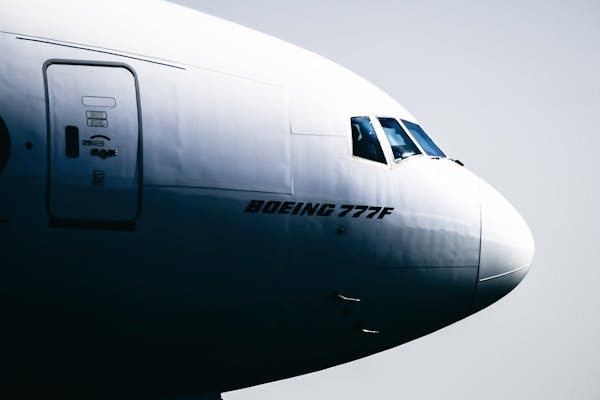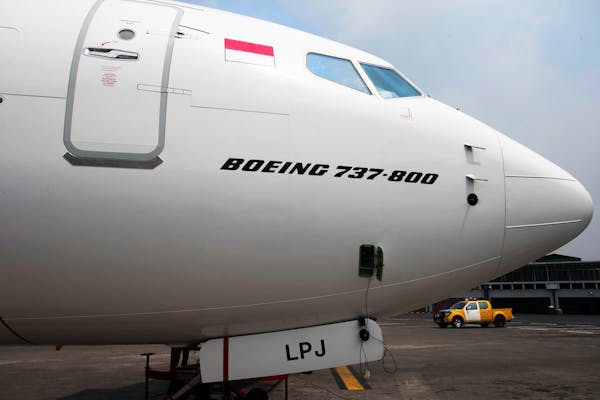
Soaring Through Time: A Look Back at The Boeing Company’s 100+ Year Legacy

The Boeing Company, a titan of the aerospace industry, boasts a rich history intertwined with innovation, commercial success, and a lasting impact on global aviation. From its humble beginnings as a wooden seaplane manufacturer to its current position as a leader in commercial jetliners and defense technology, Boeing’s journey is a testament to human ingenuity and the ever-evolving world of flight.

Early Days: Taking Flight with Seaplanes (1916-1930s)
The story begins in 1916 when William E. Boeing, a young naval engineer with a passion for airplanes, founded the Boeing Airplane Company in a Seattle hangar. Their first creation, the Model 1 seaplane, was a modest success, securing a Navy contract and laying the foundation for future endeavors.
The early years were marked by experimentation and adaptation. Boeing engineers continuously refined their seaplane designs, producing models like the B-17 and the iconic “flying boat,” the Boeing 314 Clipper. These luxurious seaplanes offered transatlantic passenger service, becoming a symbol of elegance and pioneering a new era of international travel.
The Shift to Land Planes and the Rise of the Bomber (1930s-1940s)
The 1930s witnessed a pivotal shift for Boeing. Land-based aircraft began dominating the aviation landscape, prompting Boeing to develop the Model 247, a twin-engine monoplane hailed as the first modern airliner. This revolutionary aircraft boasted retractable landing gear, a pressurized cabin, and improved aerodynamics, paving the way for faster and more comfortable commercial travel.
The looming threat of World War II saw Boeing shift its focus to military aircraft production. The B-17 Flying Fortress, a heavy bomber renowned for its durability and firepower, became a mainstay of the Allied air forces. The B-29 Superfortress, another Boeing creation, played a crucial role in the Pacific theater, culminating in the bombings of Hiroshima and Nagasaki.
The Jet Age and the Dawn of Commercial Domination (1950s-1970s)
The postwar era ushered in the jet age, and Boeing stood at the forefront of this technological revolution. The Boeing 367-80, a prototype jet airliner, eventually evolved into the iconic 707. This long-range jetliner, with its swept wings and powerful jet engines, revolutionized commercial air travel, enabling faster, more efficient transcontinental and intercontinental flights. The success of the 707 cemented Boeing’s position as a major player in the global aviation market.
Building on this momentum, Boeing rolled out a series of successful jetliners throughout the 1960s and 1970s. The short-haul 727, the mid-size 737 (one of the best-selling commercial aircraft in history), and the wide-body 747 “Jumbo Jet” all redefined passenger capacity and range. These aircraft democratized air travel, making it more affordable and accessible to the masses.
Mergers, Competition, and the Digital Age (1980s-2000s)
The latter half of the 20th century saw Boeing navigate a dynamic landscape marked by mergers, competition, and technological advancements. The 1997 merger with McDonnell Douglas, a major competitor, created the world’s largest aerospace company. This move consolidated resources but also brought challenges of integrating different corporate cultures.
Airbus, a European consortium, emerged as Boeing’s primary competitor, pushing the boundaries of innovation with its A320 and A330 series aircraft. This healthy competition fueled advancements in fuel efficiency, passenger comfort, and cockpit technology.
The dawn of the digital age brought further advancements. Boeing embraced fly-by-wire technology, allowing for greater automation and improved flight safety. Advanced materials and manufacturing techniques led to lighter and more fuel-efficient aircraft.
The 21st Century: Challenges and Continued Innovation (2000s-Present)

The 21st century has presented Boeing with its share of challenges. The 9/11 terrorist attacks significantly impacted the aviation industry. Safety concerns surrounding the 737 MAX model led to a temporary grounding of the aircraft in 2019, a significant setback for the company.
However, Boeing remains committed to innovation. The 787 Dreamliner, a fuel-efficient wide-body aircraft, marked a significant step forward in long-haul travel. The company is actively involved in developing new technologies like autonomous passenger drones and sustainable aviation fuels, aiming to shape the future of air travel.
Looking Ahead: A Legacy of Innovation and the Promise of the Future
Boeing’s journey over the past century is a testament to its unwavering dedication to innovation, adaptation, and shaping the future of flight. Here’s a glimpse into what lies ahead for this aviation giant:
-
Focus on Sustainability: Environmental concerns are a major focus for Boeing. Developing cleaner and more fuel-efficient aircraft, exploring alternative fuels like biofuels and hydrogen, and implementing sustainable manufacturing practices are key priorities.
-
The Rise of Automation: The future of aviation likely involves increased automation, both in the cockpit and in ground operations. Boeing is actively involved in researching and developing autonomous flight technologies,aiming to improve efficiency and safety.
-
The Urban Air Mobility (UAM) Revolution: The concept of flying taxis and personal air vehicles is gaining traction. Boeing is exploring the UAM market, investing in companies and developing prototypes for electric vertical takeoff and landing (eVTOL) vehicles.
-
Space Exploration: Boeing has a long history in space exploration, building spacecraft and rockets for NASA. The company is well-positioned to play a significant role in future space missions, both manned and unmanned.
Challenges and Opportunities
Despite its long-standing success, Boeing faces several challenges in the coming years. Global competition remains fierce, with Airbus and emerging players constantly pushing boundaries. Maintaining a strong safety record and regaining public trust after the 737 MAX grounding are crucial aspects. Additionally, the ever-evolving regulatory landscape and the need for sustainable aviation practices necessitate continuous adaptation.
However, Boeing also possesses significant opportunities. The growing demand for air travel in developing economies,the rise of the UAM market, and the increasing importance of space exploration all present exciting avenues for growth.By embracing innovation, prioritizing sustainability, and maintaining a focus on safety, Boeing is well-positioned to continue shaping the future of flight for generations to come.
Conclusion
The Boeing Company’s story is one of remarkable achievements, unwavering dedication to progress, and the ability to adapt to a constantly evolving industry. From its humble beginnings as a seaplane manufacturer to its current status as a global leader in aerospace, Boeing has left an indelible mark on the world. As the company navigates the challenges and opportunities of the 21st century, one thing remains certain: Boeing’s legacy of innovation and its commitment to shaping the future of flight will continue to inspire and soar to new heights.







